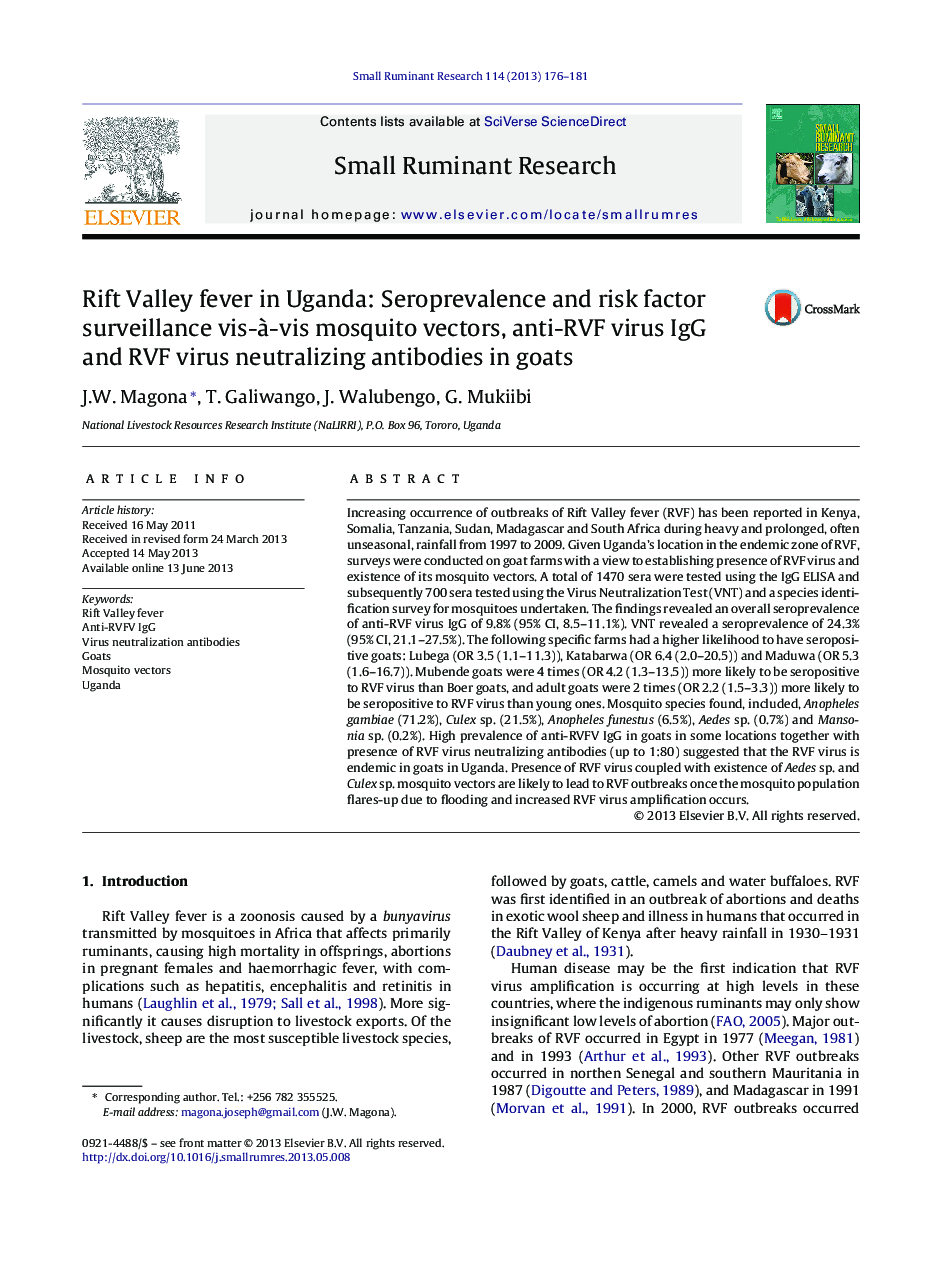| Article ID | Journal | Published Year | Pages | File Type |
|---|---|---|---|---|
| 5796053 | Small Ruminant Research | 2013 | 6 Pages |
Increasing occurrence of outbreaks of Rift Valley fever (RVF) has been reported in Kenya, Somalia, Tanzania, Sudan, Madagascar and South Africa during heavy and prolonged, often unseasonal, rainfall from 1997 to 2009. Given Uganda's location in the endemic zone of RVF, surveys were conducted on goat farms with a view to establishing presence of RVF virus and existence of its mosquito vectors. A total of 1470 sera were tested using the IgG ELISA and subsequently 700 sera tested using the Virus Neutralization Test (VNT) and a species identification survey for mosquitoes undertaken. The findings revealed an overall seroprevalence of anti-RVF virus IgG of 9.8% (95% CI, 8.5-11.1%). VNT revealed a seroprevalence of 24.3% (95% CI, 21.1-27.5%). The following specific farms had a higher likelihood to have seropositive goats: Lubega (OR 3.5 (1.1-11.3)), Katabarwa (OR 6.4 (2.0-20.5)) and Maduwa (OR 5.3 (1.6-16.7)). Mubende goats were 4 times (OR 4.2 (1.3-13.5)) more likely to be seropositive to RVF virus than Boer goats, and adult goats were 2 times (OR 2.2 (1.5-3.3)) more likely to be seropositive to RVF virus than young ones. Mosquito species found, included, Anopheles gambiae (71.2%), Culex sp. (21.5%), Anopheles funestus (6.5%), Aedes sp. (0.7%) and Mansonia sp. (0.2%). High prevalence of anti-RVFV IgG in goats in some locations together with presence of RVF virus neutralizing antibodies (up to 1:80) suggested that the RVF virus is endemic in goats in Uganda. Presence of RVF virus coupled with existence of Aedes sp. and Culex sp. mosquito vectors are likely to lead to RVF outbreaks once the mosquito population flares-up due to flooding and increased RVF virus amplification occurs.
